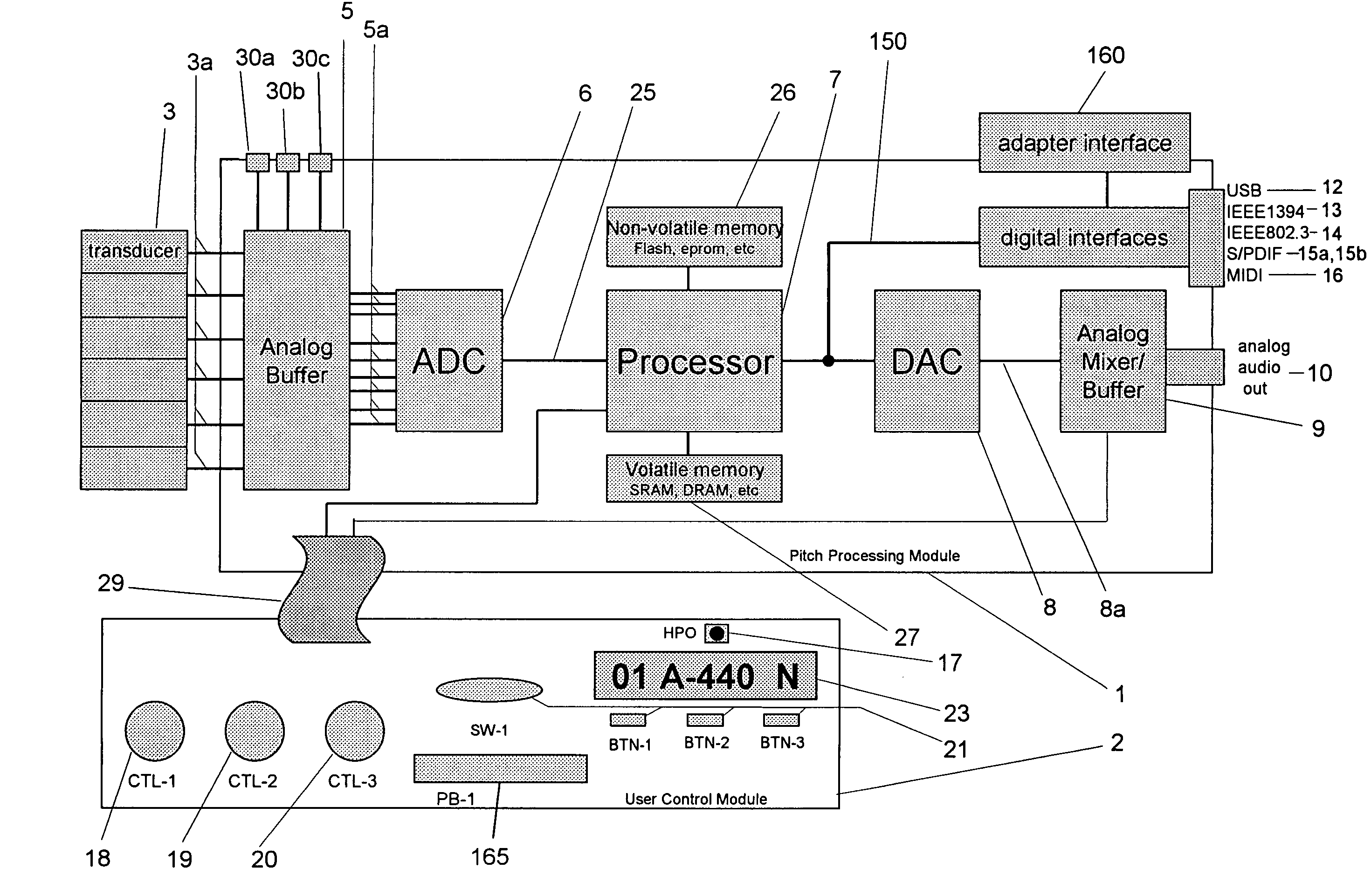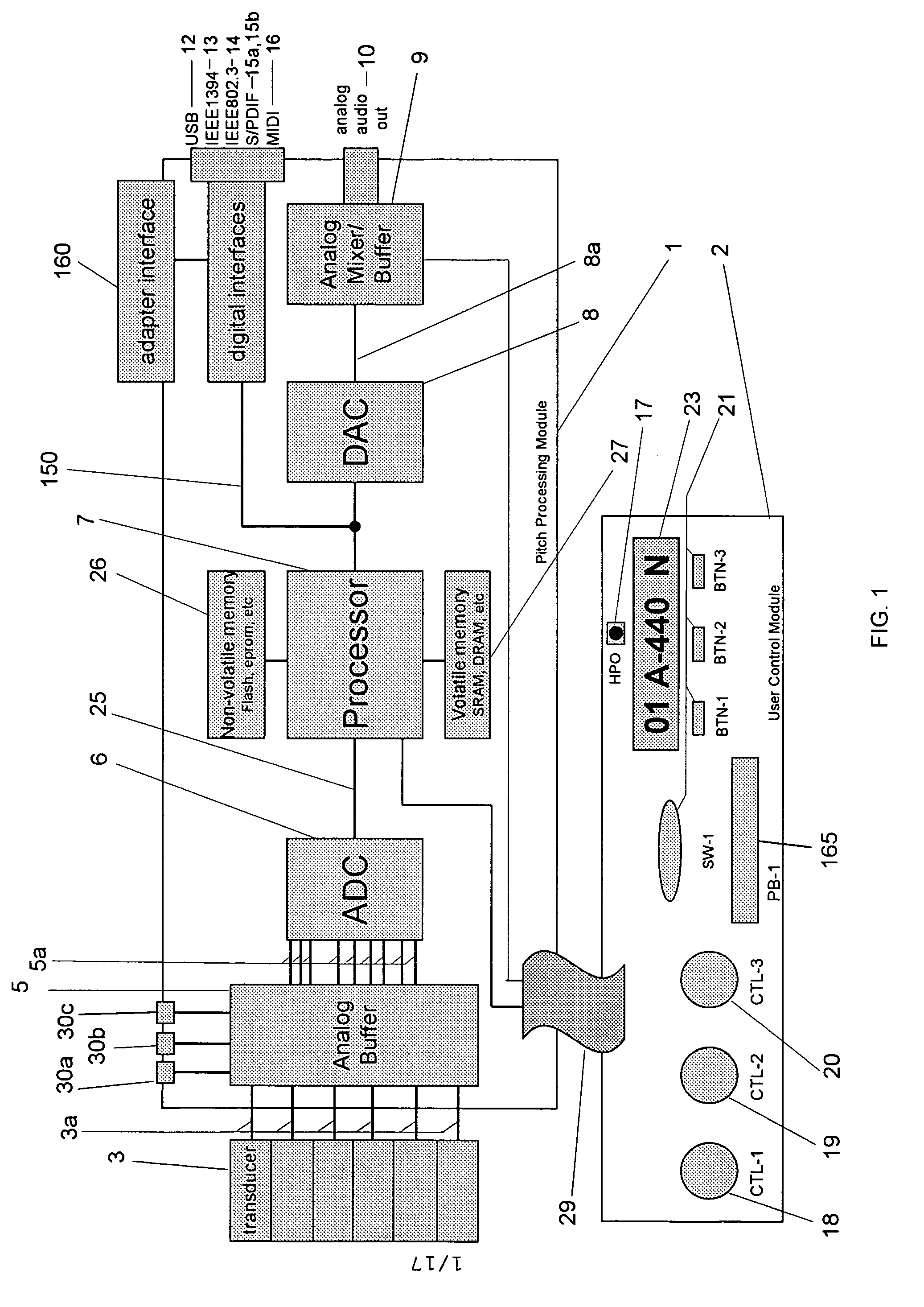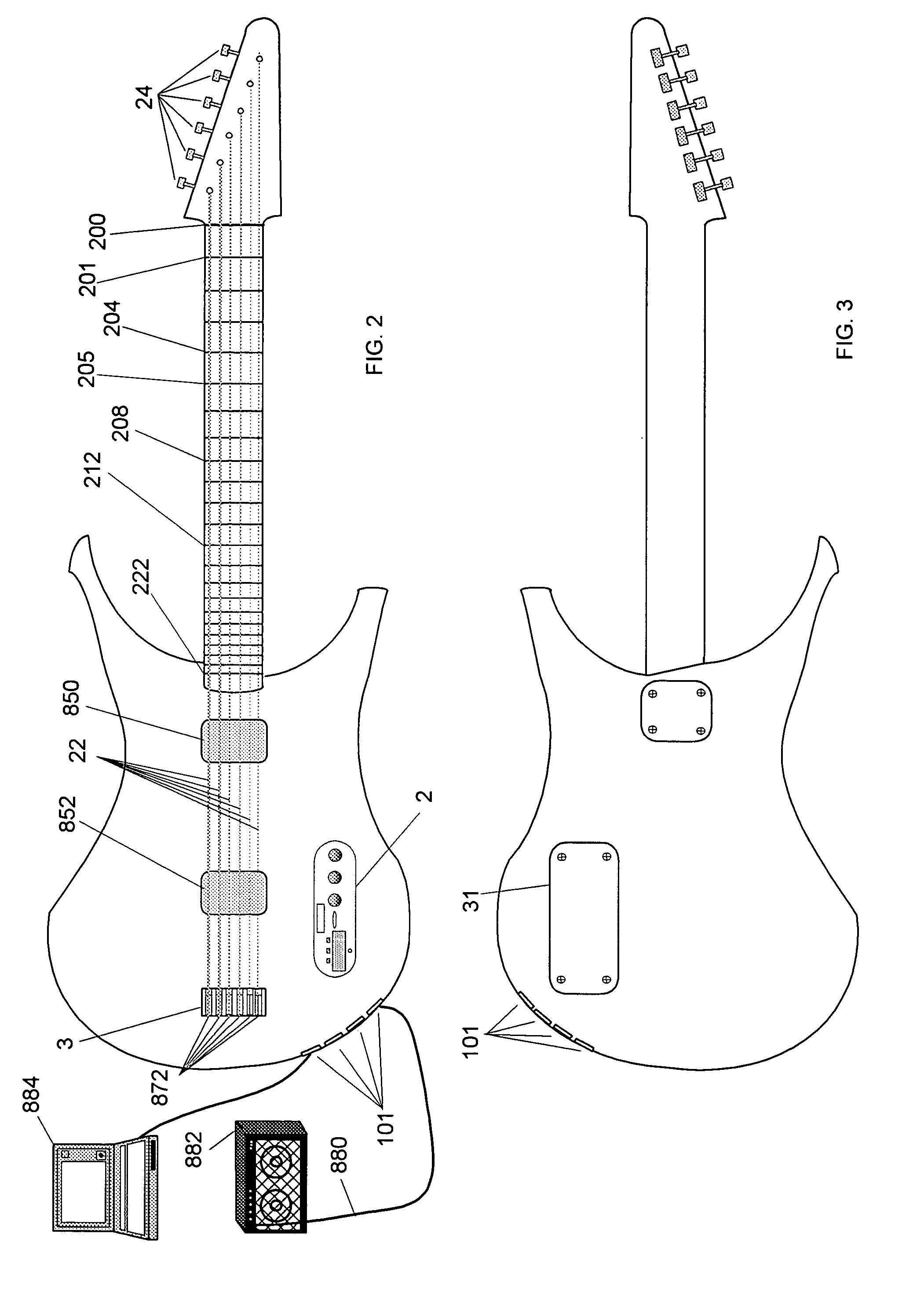Pitch drift is a problem that plagues all stringed instruments.
The unintended consequence is that the strings drift out of a state of tune.
Instrument builders and manufacturers continue to be challenged to create instruments that can reliably maintain their pitch.
There is a tradeoff of manufacturing costs versus pitch stability.
However, the price such an instrument would command would place it out of reach of most musicians.
Unfortunately, it would still suffer pitch drift which can be reduced, but not eliminated.
Mechanical tuning systems just cannot be made to maintain pitch over time without
human interaction and correction.
In addition to pitch drift, another unintentional pitch problem occurs simply because some musicians are less adept than others at tuning their instrument.
A poorly designed and manufactured instrument may not be capable of accurate intonation due to sloppy
workmanship.
This technique is not perfect.
(1995): “Unfortunately, this system is inherently deficient in that it does not result in perfect intonation.
2. Inherent limitations of intonation accuracy: A given instrument, even when perfectly adjusted for intonation, may still deviate from its target temperament because the
instrument design was somewhat compromised to begin with.
The variability of manufacturing tolerances also contributes to this problem.
3. Intonation adjustment: A given instrument may require readjustment for intonation within the temperament specification the instrument was designed for. Readjustment is necessary due to numerous environmental and mechanical factors. Intonation adjustment is considered a normal maintenance procedure.
Unfortunately, using an altered tuning can radically alter the string tension.
This can make the instrument more difficult to play, and can increase intonation error.
A capo used on an instrument that has an intonation problem tends to amplify the problem because intonation error increases the further up the neck one plays.
These devices are unreliable in restoring the instrument to a state of tune after use.
Tremolo / vibrato units are especially problematic in this regard.
Pitch bending devices also add considerable cost to the instrument due to the additional parts, complexities, and labor involved.
Electromechanical tuning systems suffer from several major drawbacks:a) These systems are costly, adding hundreds of dollars to the manufacturing cost of an instrument.b) They add mechanical complexity and weight to the instrument.
There are many components that may reduce reliability of the instrument due to age, wear, and possibly neglected maintenance.c) These systems require substantial power to operate.
Large capacity batteries with their weight penalty are needed if using an onboard power supply.
More typically, external power supplies are required due to the demanding power requirements.d) These systems do not work well for applying rapid pitch alterations as they are slow to react, and may throw the instrument out of adjustment when the string tension becomes radically altered.
This usually makes the instrument more difficult to play, and has a negative effect on intonation accuracy as well.e) These systems do not compensate for intonation error.f) When applied to traditionally styled conventional instruments, these systems fundamentally alter the appearance, sound, and aesthetic appeal of these instruments.g) These systems require additional maintenance and adjustment, usually by a trained professional thereby increasing the overall
cost of ownership of the instrument.
Several commercial products are available that implement automatic mechanical tuning of the types described by this body of work, but due to high costs, complexity, and demanding power requirements, they have not attained
mass market status and instead serve a niche for certain discriminating musicians.
However, the scope of Hildebrand does not address pitch altering a stringed instrument with a plurality of strings as his invention does not process a plurality of audio signals in parallel.
It does not address intonation compensation in the context of a stringed instrument.
It does not address the needs and requirements of the musical performance where a musician may intentionally change the pitch of the instrument for purposes of detuning the strings, and applying alternate tunings and temperaments.
This is a rather draconian principle and impractical when implemented in the real world.
This body of work does not address issues of handling stringed instruments with a plurality of strings.
Nor does it address stringed instrument pitch alteration for pitch drift, intonation compensation, pitch shifting, pitch bending, and alternate tunings.
How well manufacturers and musicians will accept this change has not yet been proven.
However, it is unlikely that this invention will cause abandonment of
instrument design parameters used for hundreds of years of
guitar building.
These inventions do not address the pitch problems inherent in stringed musical instruments.
These inventions do not address the pitch problems inherent in stringed musical instruments.
However there are several crucial limitations to these products when applied to the general problem of pitch management and control:1. The VG-8 / VG-88 devices are not built into the instrument.
They generally retail in the range of $700 to $900, placing them out of reach of beginners and musicians on a budget.4. The VG-8 / VG-88 device's pitch shifting and
pitch correction features are not effective when a direct guitar sound is needed.
This is because the VG-8 / VG-88 synthesizes sounds using the pitch and performance dynamics of the source instrument, rather than altering the source instrument's own sound for pitch.5. The VG-8 / VG-88 devices do not allow pitch shifting or temperament changes without manual
programming and setup procedures.6. The VG-8 / VG-88 devices do not adjust for pitch drift in a continuous manner.
This patent is specific to guitars and does not address the general category of all electric stringed instruments.
In this patent, pitch shifting is performed by discrete “pitch shifter” logic, and not with a more economical and flexible solution using a
general purpose processor and
digital signal processing techniques.
The presence of a footpedal control in drawings 2 and 6 of the patent indicates that this system is an accessory device that rests on the floor and thus is an inherently costly solution.
It does not address pitch bending to replace mechanical pitch bending devices on the instrument.
It does not address the needs and requirements of the musical performance where a musician may intentionally change the pitch of the instrument for purposes of detuning the strings, and applying alternate temperaments.
It does not address the ability to
pitch shift individual strings to create
hybrid instruments.
It does not address the ability to create pitch regions on the fret board.
This is an inherently costly solution.
It does not address pitch bending to replace mechanical pitch bending devices on the instrument.
It does not address the needs and requirements of the musical performance where a musician may intentionally change the pitch of the instrument for purposes of detuning the strings, and applying alternate temperaments.
 Login to View More
Login to View More  Login to View More
Login to View More 


